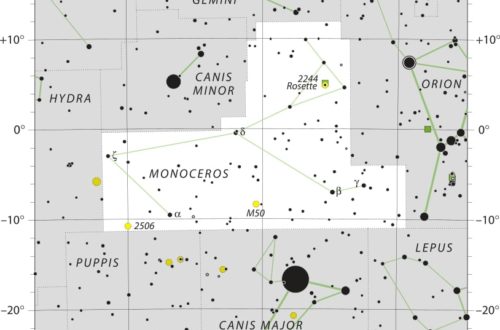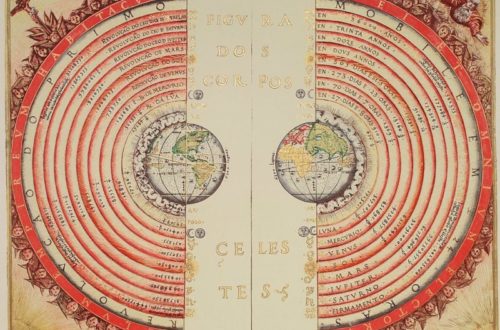Alpha Monocerotid Meteor Shower Guide

The Alpha Monocerotids are an erratic meteor shower, appearing, when active, around mid-November. It takes its name from the Monoceros constellation, as is the case for meteor showers, where the meteors appear to originate. The shower is famous for its occasional explosive outbursts.
At its peak, it can fire off a meteor storm of dozens per hour! Most years, it remains subdued, but once every decade, it can erupt with a dazzling display. The following sections will discuss why it’s special, when to see it, and how to view it best.
What Is the Alpha Monocerotid Meteor Shower?
The Alpha Monocerotids are one of the most exciting meteor showers in astronomy. They are famous for being extremely rare, unpredictable, and at times spectacularly dramatic outbursts. This shower happens every year, usually peaking on November 21.
Unlike most meteor showers, which offer calm and reliable shows, the Alpha Monocerotids enchant us with their brief violence and mysterious absence. Their activity can swing from barely noticeable to producing hundreds or even thousands of meteors per hour, making them a unique study subject for both amateur and professional astronomers.
To understand the importance of the Alpha Monocerotids, take a look at where they come from and their connection to the Monoceros constellation. Plus, learn about the ways that set them apart from their more well-known meteor shower cousins.
Defining This Elusive Shower
For this reason, the Alpha Monocerotids are thought to be a rare and elusive shower, as their most impressive performances are irregular and fleeting. It’s easy for the Alpha Monocerotid meteor shower to be forgotten in the interim. When they do come, they always come with one big surprise in a single night they produce a brilliant display, often in the form of a spectacular outburst of meteors.
Recent studies have begun to shed light on the shower’s erratic nature. The shower only lasts a few hours at most on its peak night, and outbursts can be finished in as little as minutes. Few in the general public are familiar with the Alpha Monocerotids. Even the most devoted skywatchers wouldn’t catch them without a heads-up.
Tracing the Parent Comet’s Dust Trail
The Alpha Monocerotids’ meteors are the result of a dust trail left behind by a long-period comet. As the comet moves through the solar system, it loses tiny pieces of dust and other debris. Over decades to centuries, these particles disperse along the same orbit as the comet, forming a trail of cosmic dust.
Every November, Earth’s orbit intersects with this stream. As our planet plows through the dust, the particles slam into our atmosphere at high speeds and burn up, creating the streaks of light that define the meteor shower. The dust trail is not uniform in density, which accounts for why some years have strong outbursts and others lack one.
When a dense, tightly packed section of the trail comes around, an unexpected barrage of meteors can be released. A much thinner stretch would only show a handful or even none.
The Unicorn Constellation Connection
The radiant point is the location in the sky that meteors appear to come from. Indeed, you can see them from the eastern half of the Monoceros constellation, called the Unicorn. Monoceros is not as bright or well-known as neighboring Orion, but it sits just next to Orion in the night sky.
The location of the radiant point is critical because this will determine when the shower is visible and its visibility. Anyone planning to watch should make sure the radiant is high in the sky. This typically occurs during the late night or early morning hours.
The dappled beauty created by the close proximity of Orion, Canis Major, and Gemini enchants all who peer skyward! This area of the sky is often teeming with activity, producing a dynamic celestial canvas!
Key Shower Characteristics Explained
Here’s a closer look at four unique features that set the Alpha Monocerotid meteor shower apart. The meteors are traveling through space at a whopping 65 kilometers per second. This puts them among the fastest meteor showers on record!
During peak outbursts, the zenithal hourly rate (ZHR) can reach well over 400. In exceptional years, it’s even peaked at a mind-boggling 1000 meteors visible at peak under dark skies! Typically, the rate is in the single digits per hour, sometimes less than ten.
Spectators have been known to see meteors in rapid-fire succession—two or three in only a couple seconds—paired with long periods of silence. This bunching effect is characteristic of the unpredictable, clustered displays that typify the shower’s outbreak years.
When Do They Typically Appear?
The shower is active from November 15 to 25, with peak activity around November 21. Since Monoceros is highest in the sky after midnight, that’s typically the best viewing time. In other years, maxima have moved forward several hours or even a full day.
This is why documentation of past events and forecasting of future ones is essential for smart preparedness. Seasonal weather can impact visibility, as late autumn skies are commonly overcast in many areas. The darker the better — the more rural the skies you can find, the better your chances of seeing one.
Why They Are Often Missed
There are a few reasons why the Alpha Monocerotids are typically missed. Their outbursts are short-lived and erratic, occasionally lasting just minutes. If you miss the window, you miss the show.
This makes light pollution from urban areas a major hindrance, as it drowns out all but the brightest meteors. Any weather, including clouds or fog, can obscure the view completely.
When it comes to these meteors, preparation and timing are everything. Monitor the forecasts and pick the darkest location you can get to. Preparation for a brief outburst greatly increases your odds of seeing this fleeting phenomenon.
Spotting the Unicorn’s Tears
The Alpha Monocerotids are one of those rare meteors that can shock even long-time skywatchers. The phenomenon is erratic—some years producing little to no activity at all, while other years erupting into a stunningly speedy and luminous show.
Essential Gear for Meteor Watching
Bring a reclining chair, sleeping bag, and layered clothes. Binoculars are a great addition, but they are not essential. As you may know, meteors are most easily observed with the unaided eye. Use weather and meteor shower tracking apps for updates.
Decoding the Zenith Hourly Rate (ZHR)
The zenith hourly rate, or ZHR, indicates the maximum number of meteors an observer would be able to see within one hour. This is assuming, though, that the radiant is directly overhead and you have clear skies.
In terms of ZHR, Alpha Monocerotids usually have a ZHR of 1 or less, but occasionally experience outbursts reaching a maximum of 1,000 meteors per hour! ZHR varies depending on shower type, time of day, and observer location.
Challenges in Predicting Performance
Predicting performance is a real challenge. The unknown comet source and very narrow debris trail prevents precision. Timing and intensity are a common pain point for models.
Technology—like automated sky cameras—helps, but teamwork among astronomers worldwide is key for piecing together reliable forecasts.
Conclusion
The Alpha Monocerotid meteor shower leave people perplexed annually. Some nights will feature a truly awesome display, while in some years you’ll only see a few speedy flashes. Even if you just catch a few, the search brings some magic to a frigid November evening. So the next time the Alpha Monocerotids come back, get yourself a warm jacket, go outside, and keep your eyes open! Post your adventures, share your ideas, show us your gear. Believe me, the sky’s got a few more tricks up its sleeve that you don’t want to miss.
Frequently Asked Questions
What are the Alpha Monocerotids?
They originate in the constellation Monoceros, the Unicorn. Luckily for us, their outbursts are often short-lived, yet dazzling.
When is the best time to view the Alpha Monocerotids?
The shower typically peaks around November 21 each year. As with all meteor showers, the optimal time to view is after midnight, when the sky is darkest and the radiant is highest.
Why are Alpha Monocerotid outbursts unpredictable?
This is because the parent comet of the shower is not very well known, and the debris streams are narrow. This all factors into making it extremely difficult to predict when major outbursts will occur.
How many meteors can I expect to see?
Underwhelming spectacle Most years, even this shower is weak with only a handful of meteors per hour. During ideal storms, rates can exceed 400 meteors per hour but only for brief intervals.
Do I need special equipment to view the Alpha Monocerotids?
As with most meteor showers, a telescope is not required. Simply go somewhere dark, far away from the lights of the city, give your eyes time to adjust to the darkness and gaze upward.
Will the Alpha Monocerotids have a big outburst soon?
Unfortunately, large outbursts are quite rare and difficult to predict. For now, scientists will continue to monitor for potential activity in the coming years, particularly as we continue to gather insights about their parent comet.
See also:
- Previous meteor shower: Leonid Meteor Shower
- Next meteor shower: November Orionid Meteor Shower
Would you like to receive similar articles by email?





